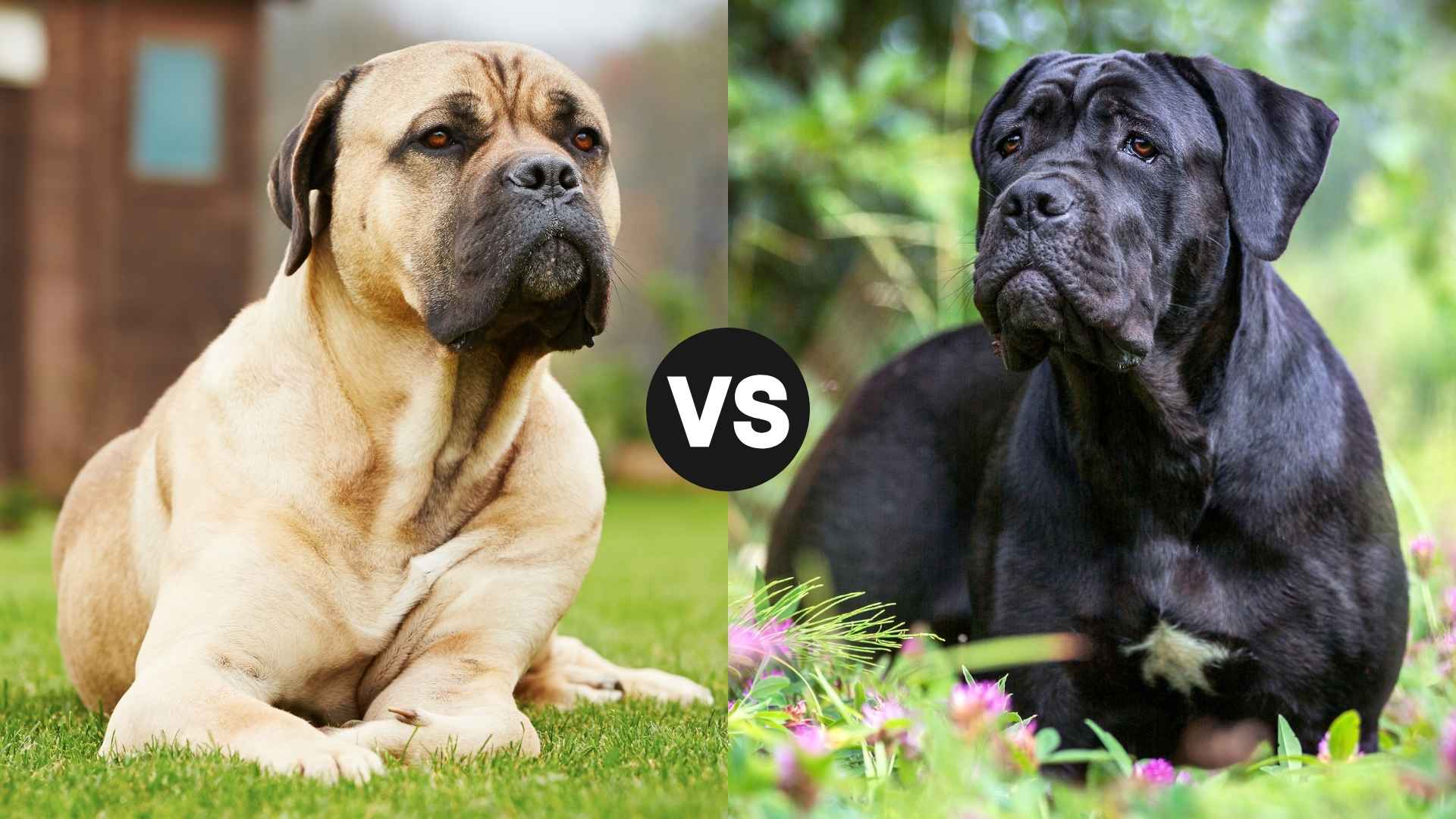Choosing between the Bullmastiff and Cane Corso is like deciding between two loyal, muscle-bound bodyguards—each one massive, majestic, and fiercely devoted to their humans. Both breeds hail from strong working backgrounds, bred to guard estates, protect livestock, and be fearless in the face of threats.
But when it comes to picking the right one for your home, lifestyle, and family dynamic, the differences are more than skin (or fur) deep. While the Bullmastiff exudes quiet strength and calm confidence, the Cane Corso leans into intensity, drive, and a need for purpose.
One might prefer lounging by your side, while the other demands a task to fulfill. But both share an incredible bond with their humans—loyal to a fault and protective to the core. So, how do you decide which one is right for you?
So, we’ll break down the key differences in temperament, training, energy levels, and care requirements between the Bullmastiff and Cane Corso. Whether you’re drawn to their noble appearance or intrigued by their guarding instincts, this comparison will help you make the most informed (and heartfelt) choice.
Bullmastiff vs. Cane Corso
Size and Weight Differences
When you pit the Bullmastiff against the Cane Corso, you’re not exactly talking about lap dogs—unless your lap is the size of a sofa. But when it comes to size and weight, who’s the heavyweight champ? Let’s break it down—and try not to get squished in the process.
Bullmastiffs:
The Bullmastiff is like that giant bodyguard who doesn’t say much but makes you feel incredibly safe. According to Wikipedia, it was bred in the 19th century as a guard dog by crossing the English Mastiff with the now-extinct Old English Bulldog. This dog takes its job seriously—even if that job is now guarding your couch.
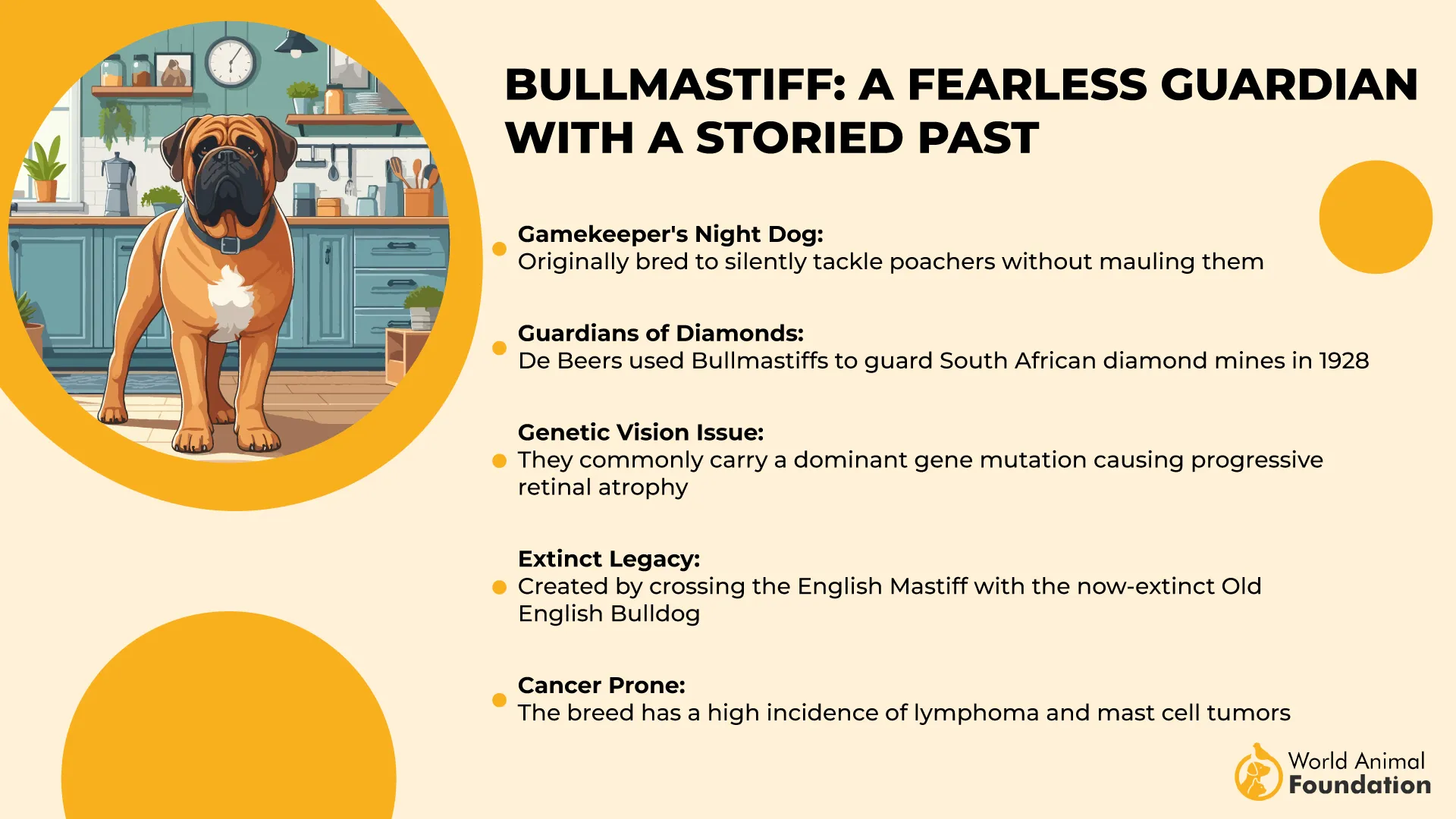
Height: 24 to 27 inches (at the shoulder)
Weight: 100 to 130 pounds (yes, that’s like carrying a small adult around)
Build: Stocky, muscular, and broad-chested, like a professional wrestler in a fur coat.
Despite their imposing size, Bullmastiffs are mellow couch potatoes at heart. They love their humans but may need a forklift to move once they’ve found a comfy spot.
Cane Corsos:
Now, the Cane Corso (pronounced KAH-nay COR-so) sounds like an opera singer—but don’t let the name fool you. According to the AKC, the Cane Corso’s ancestry traces back to ancient Rome, and its name is derived from Latin, meaning “bodyguard dog.” This breed means business. They’re descendants of Roman war dogs, and yes, that gladiator vibe still lingers.
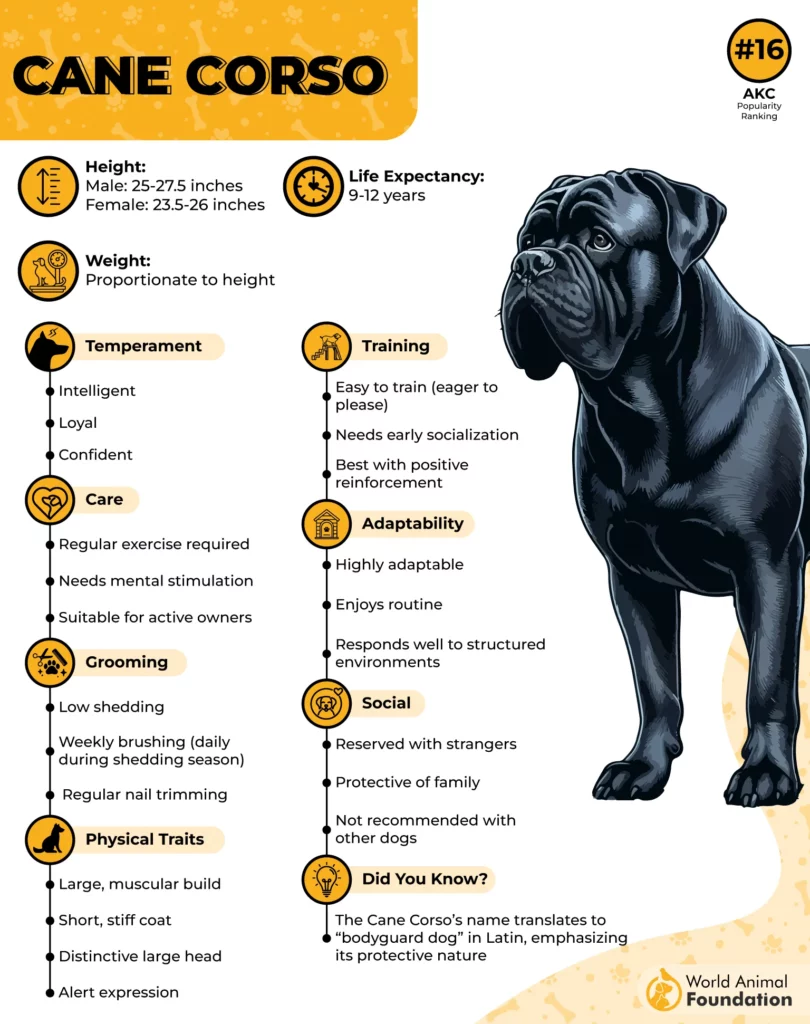
Height: 23.5 to 27.5 inches
Weight: 90 to 120 pounds (though some males can go even higher)
Build: Sleek, athletic, and alert—think of a bodybuilder who’s also into yoga.
While a Cane Corso might be slightly lighter than a Bullmastiff, it’s all lean muscle. They’re agile protectors who move like they’ve got somewhere important to be (even if it’s just the kitchen).
Personality Traits
Bullmastiffs:
Bullmastiffs are like the wise, older bouncer at a club—calm demeanor, and not easily rattled. They’re known for their gentle, affectionate nature with family, but don’t mistake their love for laziness—they’ll still rise (eventually) to protect you.
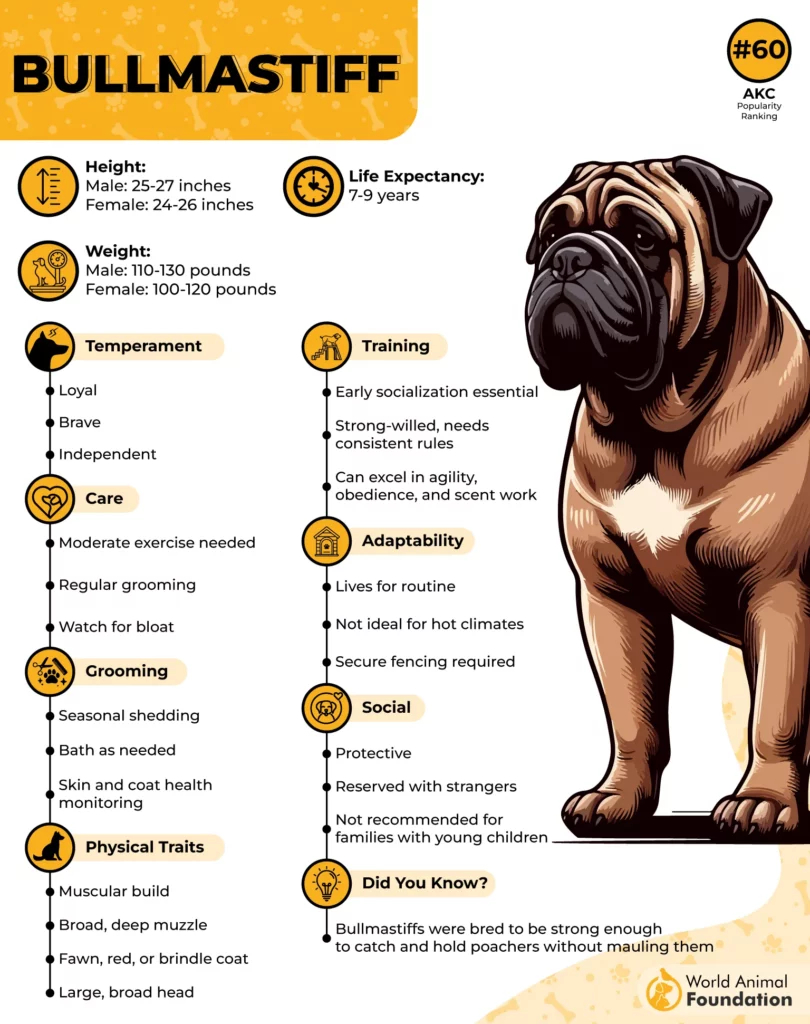
Loyal? Absolutely.
Clingy? Just the right amount.
Bark-a-lot? Nope. They believe in quality, not quantity.
These dogs are dignified with a dry sense of humor (you’ll know when they give you the look). But hey, with that face, they can get away with almost anything.
Cane Corsos:
Cane Corsos are like that multitasking CEO who also goes to the gym at 5 a.m. every day. They’re intelligent, assertive, and need a job—or they’ll create one (like “guarding the fridge” or “supervising the mailman”).
Highly trainable—but only if you earn their respect.
Protective but not aggressive without reason.
They bond deeply with their family and take their role seriously.
If you don’t give them enough mental stimulation, they’ll outsmart you—and maybe install their own home security system. (Kidding… kind of.)
Dietary Needs and Weight Management
Let’s be honest—both these breeds would love to eat like linebackers at an all-you-can-eat buffet. But keeping them healthy and trim is crucial.
Bullmastiffs:
Diet Tips:
Prone to gaining weight faster than you can say “leftover steak.”
Needs high-quality, low-fat dog food—protein-rich, with joint-supporting nutrients.
Watch portion sizes. They’ll happily eat until they resemble a furry ottoman.
Weight Management:
Because they’re naturally less active, they require strict portion control and low-impact exercises (like long walks or backyard sniff-fests).
Watch for elbow/hip dysplasia or joint issues aggravated by extra pounds.
Cane Corsos:
Diet Tips:
More active, so they need more protein to fuel their energy and muscles.
Opt for diets with lean meats, omega-3s, and calcium for bone support.
They’re more athletic, so burning calories is easier—unless you let them become couch potatoes.
Weight Management:
Need mental and physical activity daily—walks, obedience training games, maybe a treadmill (for real, some Corsos love them).
Extra weight can put strain on their muscular frame and joints, especially if they’re still growing.
Trainability and Intelligence
When it comes to trainability and intelligence, the Bullmastiff is the strong, silent type who learns at his own pace, while the Cane Corso is the sharp, eager student who might just start training you if you’re not paying attention.
Bullmastiffs:
Bullmastiffs are intelligent, no doubt—but they also have a degree in “selective listening.”
They’re quick to learn but even quicker to decide if what you’re saying is worth their time.
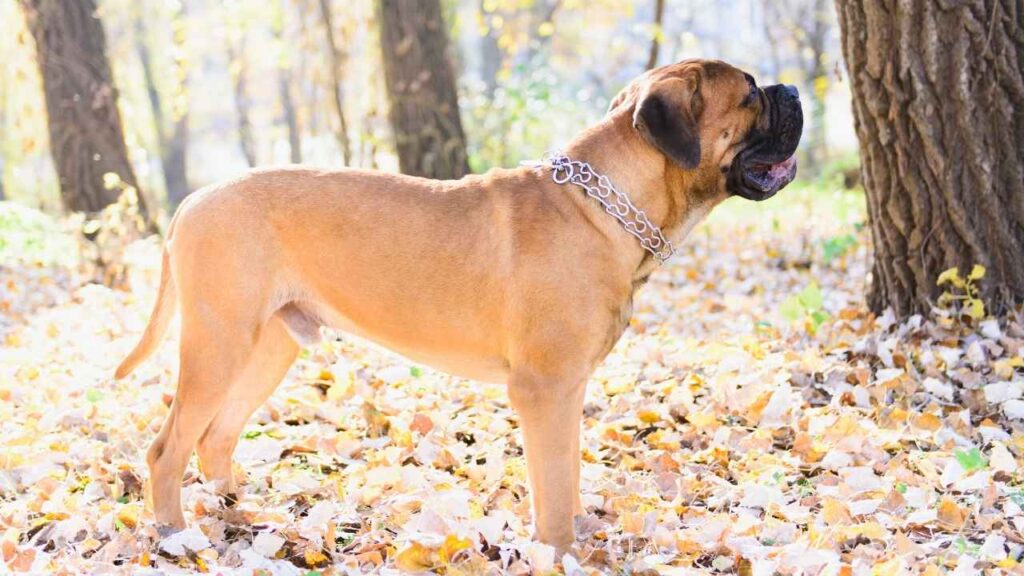
Think of them like that chill kid in class who could ace the test but just doesn’t feel like it.
They respond best to calm, confident leadership and positive reinforcement—but don’t expect golden retriever enthusiasm.
Repetition? Meh. A Bullmastiff will look at you like, “We already did this. Twice. We’re done, human.”
Training Tip: Short, positive sessions with high-value treats (and possibly a standing ovation) work wonders.
Cane Corsos:
Now this is a dog that reads the room—and probably the Wi-Fi password. Cane Corsos are highly intelligent, and they want to learn. But here’s the catch: they want a leader, not a pushover.
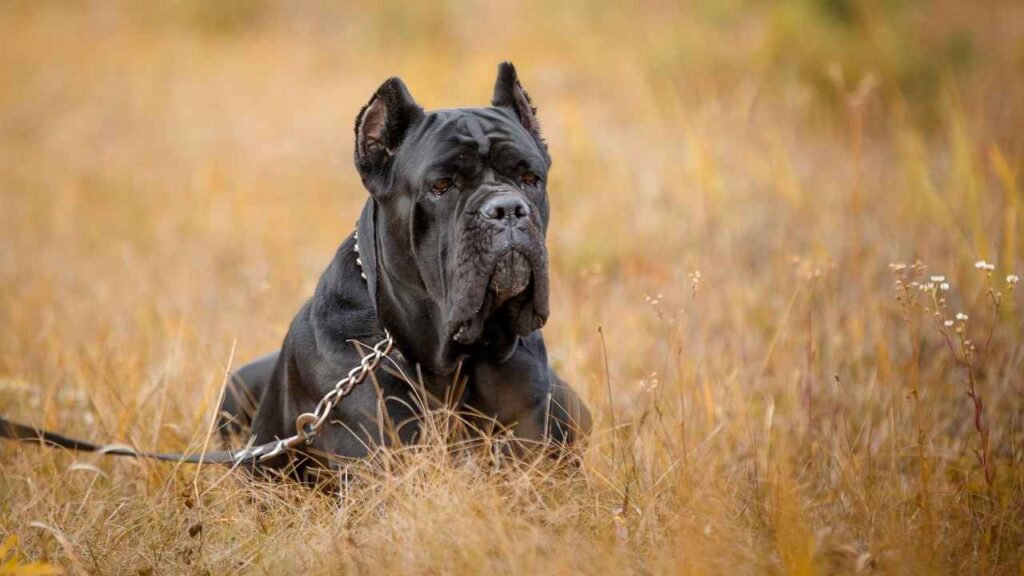
Quick learners with excellent memory and a strong work ethic.
Excel in obedience, agility, protection work, and advanced training.
But if you’re inconsistent, they will absolutely outsmart you and possibly start their own training program.
Training Tip: Start early, be firm but fair, and keep their brilliant minds busy—or they’ll invent hobbies (like “doorbell barking marathons”).
Energy Levels and Activity Requirements
When it comes to energy levels and activity needs, the Bullmastiff is your laid-back lounge buddy, while the Cane Corso is more of a motivated gym partner who’s always ready for a workout.
Bullmastiffs:
Let’s be real—Bullmastiffs aren’t out there chasing frisbees like border collies. They’re more like “slow and steady wins the nap.”
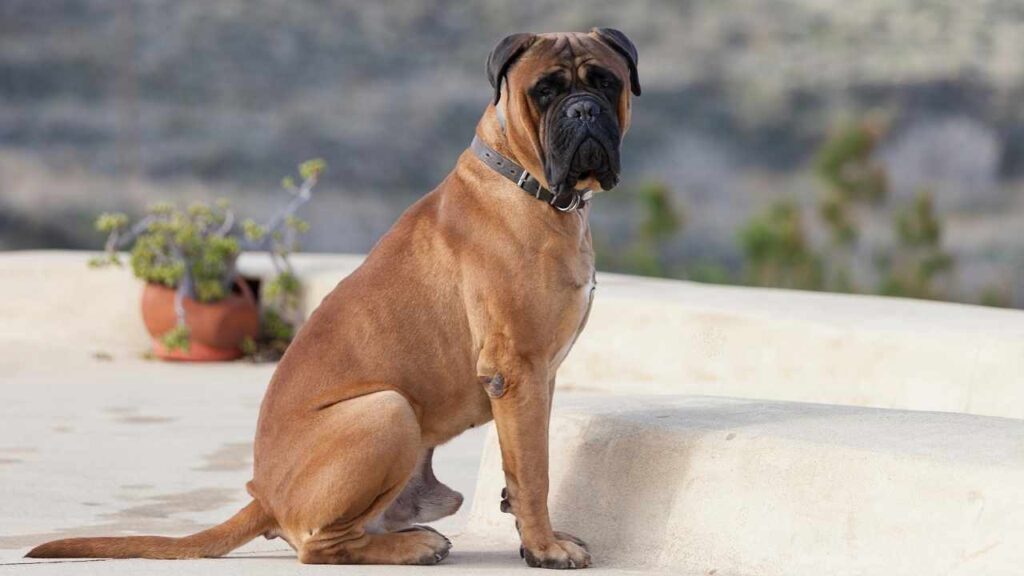
Energy Level: Low to moderate.
Favorite Activities: Strolling, lounging, light patrols of the backyard, and pretending not to hear “walk time.”
Exercise Needs: 30–45 minutes of daily low-impact activity is enough.
Overdo it, and you’ll get “the look” that says, “Please carry me back home.”
Cane Corsos:
Corsos are built like gladiators and have the energy to match. Don’t be fooled by their serious face—inside is a dog that lives for action.
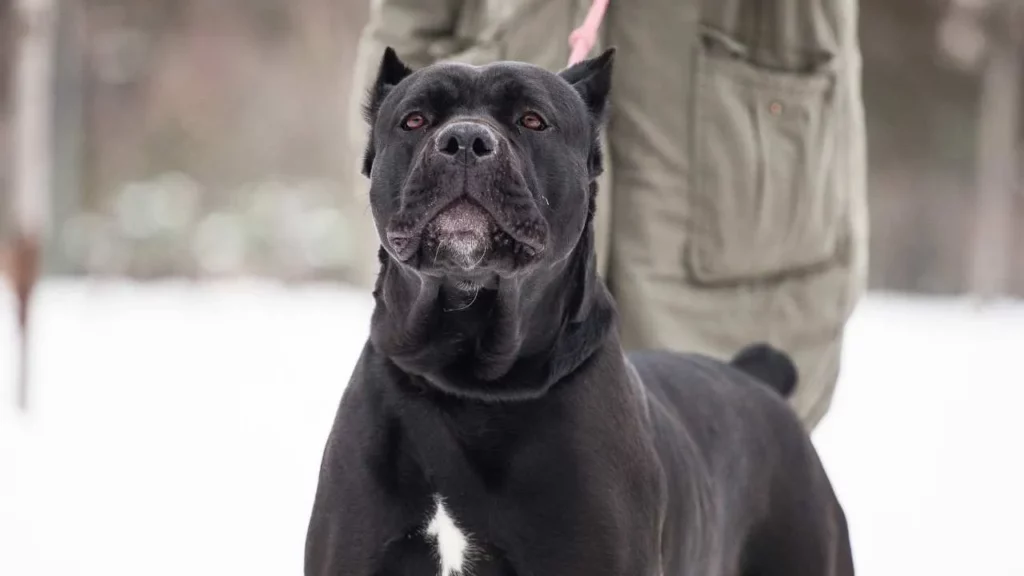
Energy Level: Moderate to high.
Favorite Activities: Running, hiking, training sessions, playing with purpose.
Exercise Needs: Moderate exercise of at least 60–90 minutes daily, ideally with both physical and mental stimulation.
Without enough to do, they’ll create their own fun. (And that usually involves your shoes.)
Either one can be an incredible companion, but only if you respect their unique vibe. Whether you’re looking for a laid-back protector or a high-drive working partner, one of these majestic breeds has your back (and your heart).
Health Profile and Lifespan Expectations
When it comes to health and life expectancy, both the Bullmastiff and Cane Corso are robust, powerful breeds—but like all giants, they carry a few health problems and don’t stick around as long as we’d wish.
Bullmastiffs:
Bullmastiffs are stoic and tough on the outside, but like most large breeds, they have a shorter lifespan and are prone to several health issues.
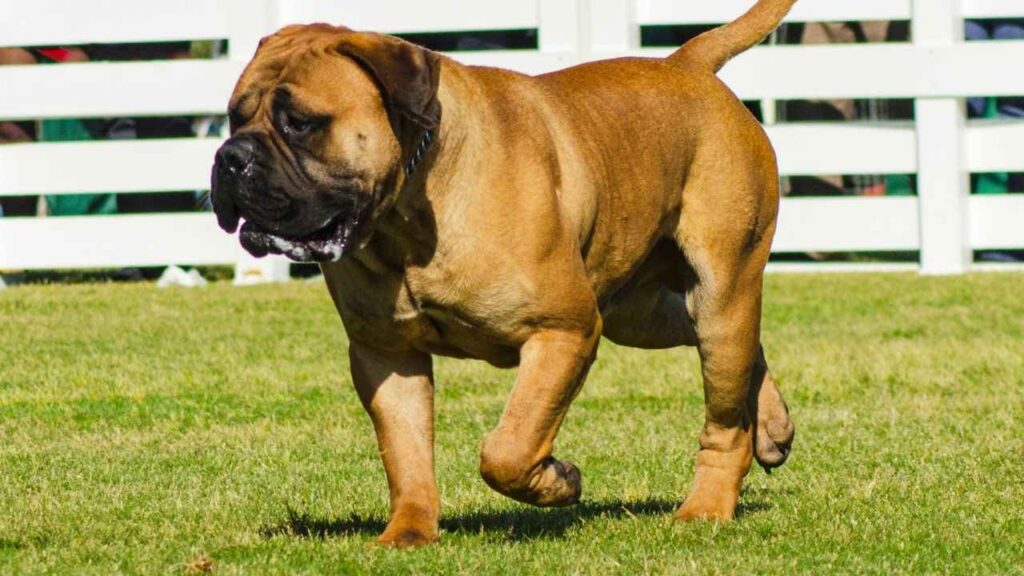
Average Lifespan: 7–10 years
Common Health Issues:
Hip & elbow dysplasia
Bloat (gastric torsion) – a scary emergency
Cancer (especially lymphoma and mast cell tumors)
Hypothyroidism
Heart disease (subaortic stenosis)
Because of their size, their bodies age faster and put more strain on joints and internal organs. But with regular checkups, vet visits, and good care, they can live happy, full lives—ideally on your couch.
Cane Corsos:
Corsos are muscular marvel, but even tanks have wear and tear. Fortunately, they tend to be a bit healthier and longer-lived than their Bullmastiff cousins.
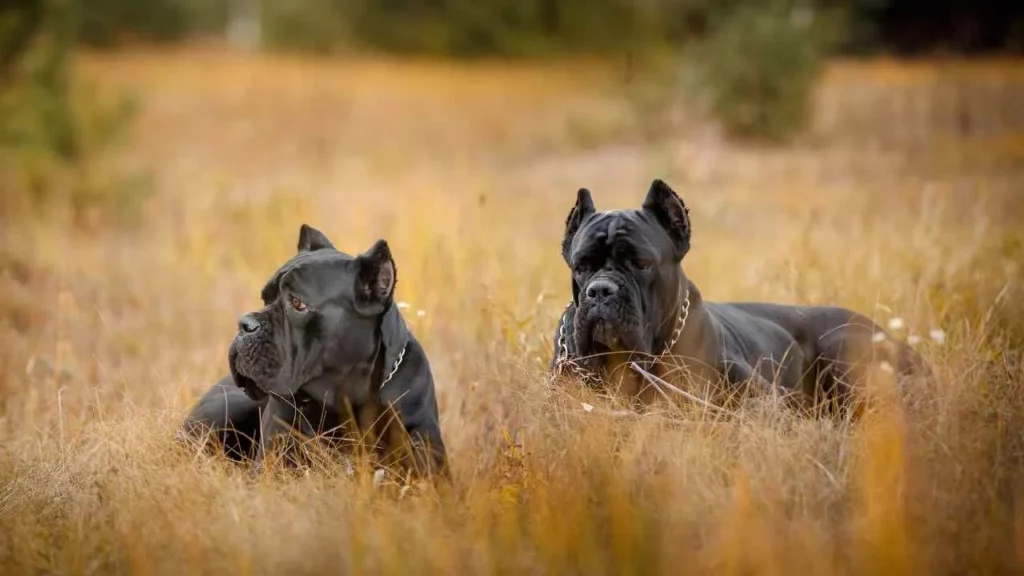
Average Lifespan: 9–12 years
Common Health Issues:
Hip dysplasia (yep, this one again)
Entropion (eyelid rolling inward—ouch)
Cherry eye
Bloat (those big chests come with risks)
Skin allergies or mange in some lines
Corsos benefit greatly from early health screening, high-quality diets, and plenty of daily exercise to maintain a healthy weight.
Grooming Needs and Allergy Considerations
When it comes to grooming needs and allergy considerations, both the Bullmastiff and Cane Corso keep things relatively low-maintenance, but they do come with a few hairy details you’ll want to know.
Bullmastiffs:
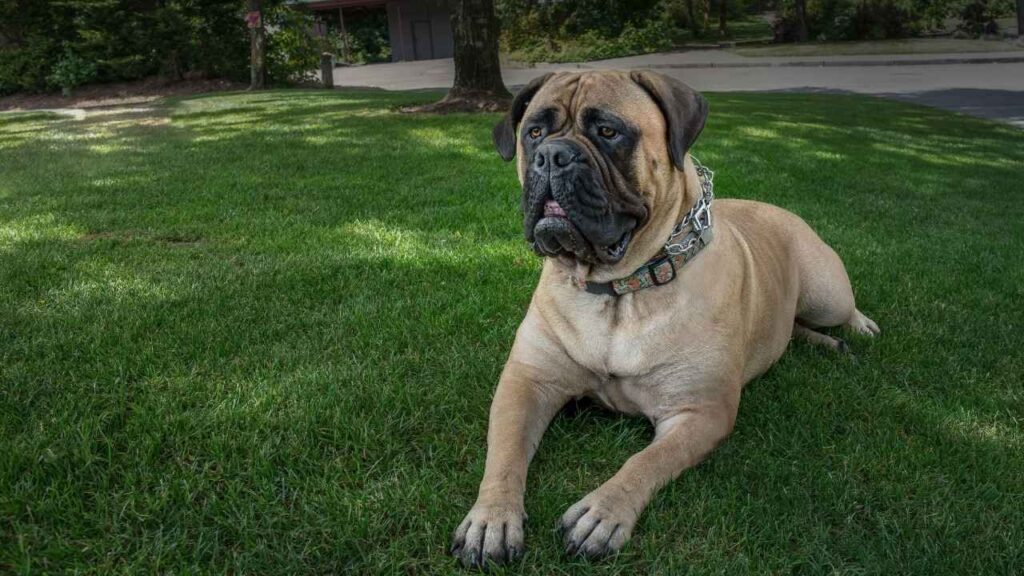
Coat Type: Short, dense, and smooth
Shedding: Moderate year-round (they do “surprise snowstorms” of fur seasonally), Bullmastiffs, so maintaining their coat health requires attention to their diet, says WebMD.
Grooming Needs:
Weekly brushing with a rubber mitt or bristle brush
Wipe drool zones often (your furniture will thank you)
Regular cleaning of ears, teeth, and those adorable wrinkles around the face
Allergy Factor: Not hypoallergenic. While their coat isn’t crazy, their dander and saliva can trigger allergies, especially with all the drool.
Cane Corsos:
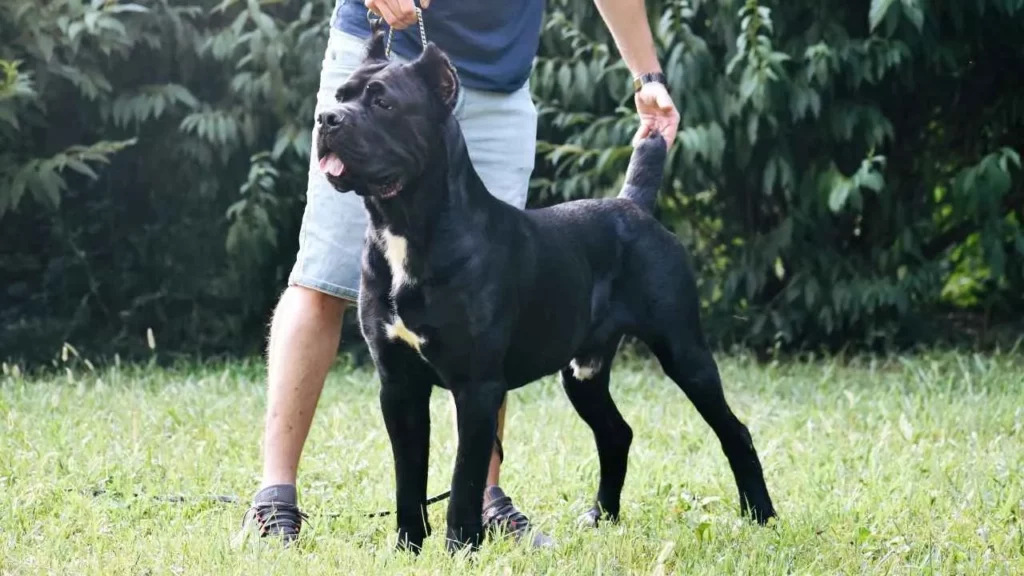
Coat Type: Short, stiff, double coat
Shedding: Low to moderate, but seasonal blowouts happen (grab the vacuum)
Grooming Needs:
Weekly brushing with a curry brush
Bathing once a month or as needed
Nail trimming (those paws are like bear traps if you ignore them)
Allergy Factor: Also not hypoallergenic, but their lower drool factor (compared to the Bullmastiff) may make them slightly more tolerable for allergy-sensitive owners.
No matter which breed you choose, a little love, regular vet care, and daily snuggles go a long way toward keeping these noble giants healthy and happy.
Conclusion
When comparing the Bullmastiff and Cane Corso, it’s clear that both are big dog breeds initially bred to protect their families and property, making them excellent choices for a family dog or furry friend with strong guarding instincts. The Bullmastiff is known for its even-tempered nature, often making it more suitable for first-time owners or families with small children and other pets, like a cat or smaller pets. In contrast, the Cane Corso makes a more stubborn and independent dog, not suited for inexperienced owners rather with someone having the knowledge and responsibility to provide consistent training and early socialization.
Both the cane corso and Bullmastiff demand a committed owner, ideally one who understands the importance of properly trained dogs and early socialization to prevent any danger or worry around strangers and vulnerable family members. While the Bullmastiff tends to be more relaxed, the Cane Corso often makes a vigilant protector, similar to other breeds like the Rottweiler.
Whether adopting a puppy from a reputable breeder or bringing home an adult dog, these two breeds are best suited for households ready to provide the attention and structure they need. With proper guidance, both the Bullmastiff and Cane Corso can be loyal, loving, and protective companions who enhance the safety and happiness of their homes.


